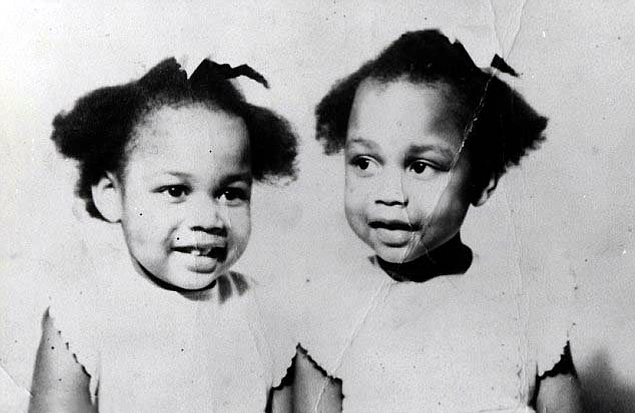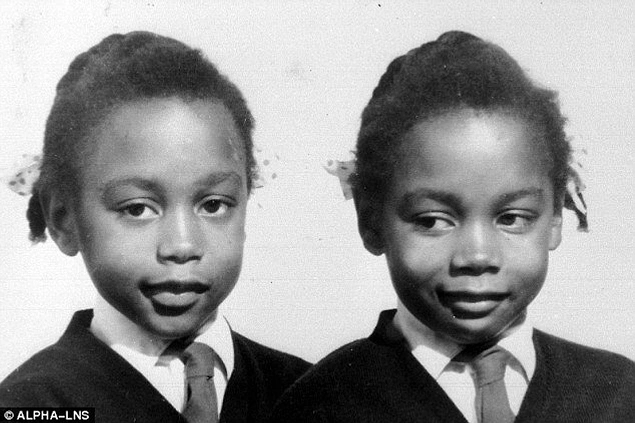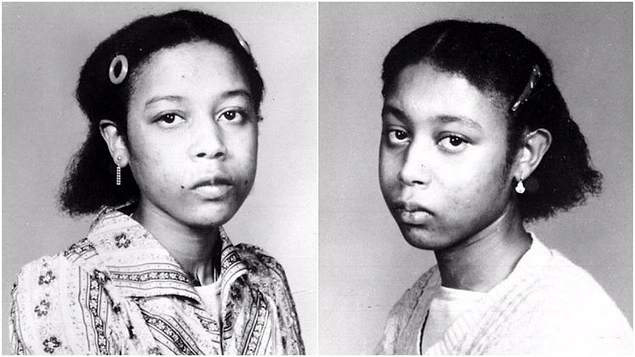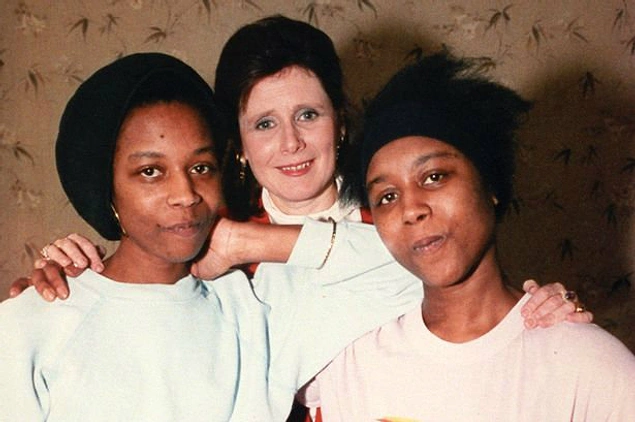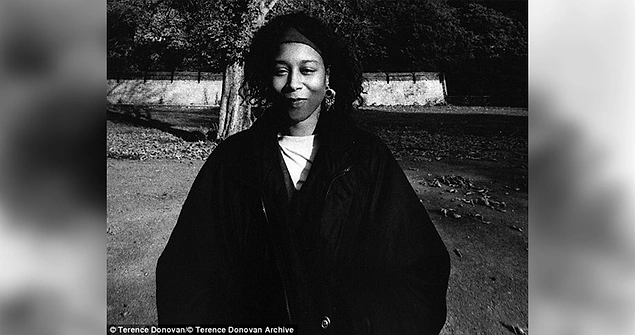Time Magazine compiled a list of the 26 most brilliant cartoon characters.
Who do you feel they left out? Answer in the comments.
Lata.
Lata.
-WTS.
Daria Morgendorffer, Daria
Aside from her oversized round glasses, Daria Morgendorffer is best remembered for maintaining her hilariously cynical observations while dealing with challenging social situations and her everyday life in high school.
Ms. Frizzle, The Magic School Bus
Ms. Frizzle, voiced by Lily Tomlin, is an eccentric and knowledgable teacher at Walkerville Elementary who, along with a chameleon named Liz, takes her class (and the show's viewers) on educational field trips. In Netflix's remake of the '90s cartoon, Kate McKinnon will lend her voice to the unique teacher.
Helga Pataki, Hey Arnold!
Helga exhibits a mean, tough, tomboyish demeanor. She is the class bully, especially to Arnold, who she calls "football head." Secretly, Helga has an obsessive crush on Arnold, going as far as building a shrine to him in her closet.
Lana Kane, Archer
Lana was the top female agent at ISIS (International Secret Intelligence Service) before it was dissolved. Throughout the series, Lana (voiced by Aisha Tyler) and ex-boyfriend Archer are paired on various missions, and she constantly insults him in the field because of his lack of judgment, though she still harbors occasional feelings for him.
Patti Mayonnaise, Doug
Patti Mayonnaise is Doug's friend and secret love interest. Creator Jim Jinkins reportedly based Mayonnaise, who generally has a positive demeanor and is a star athlete, on his own crush from his junior high and high school days.
Patti Mayonnaise is Doug's friend and secret love interest. Creator Jim Jinkins reportedly based Mayonnaise, who generally has a positive demeanor and is a star athlete, on his own crush from his junior high and high school days.
Eliza Thornberry, The Wild Thornberrys
Eliza is a smart and fearless 12-year-old with the ability to communicate with animals —a secret she keeps from her family. She is accompanied by Darwin, her pet chimp, who often joins her on adventures in the wilderness.
Eliza is a smart and fearless 12-year-old with the ability to communicate with animals —a secret she keeps from her family. She is accompanied by Darwin, her pet chimp, who often joins her on adventures in the wilderness.
Angelica Pickles, Rugrats
A spoiled only child, Angelica is the cousin of Tommy Pickles and is regularly dropped off at his house for babysitting. Angelica uses Tommy and his toddler friends for her own selfish needs and often bullies them, regularly calling them "dumb babies."
A spoiled only child, Angelica is the cousin of Tommy Pickles and is regularly dropped off at his house for babysitting. Angelica uses Tommy and his toddler friends for her own selfish needs and often bullies them, regularly calling them "dumb babies."
Velma, Scooby-Doo, Where Are You?
Velma is portrayed as the brains of the crew in Scooby-Doo, Where Are You?, which premiered in 1969. Always losing her glasses, she is usually paired off with Shaggy and Scooby while solving mysteries, and her keen sensibility normally leads to solving the mystery at hand.
Velma is portrayed as the brains of the crew in Scooby-Doo, Where Are You?, which premiered in 1969. Always losing her glasses, she is usually paired off with Shaggy and Scooby while solving mysteries, and her keen sensibility normally leads to solving the mystery at hand.
Francine Frensky, Arthur
Francine, an orangutan, is a tomboy, athlete and musician. A classmate of Arthur's in Mr. Ratburn's class at Lakewood Elementary school, she is often seen with her best friend Muffy.
Francine, an orangutan, is a tomboy, athlete and musician. A classmate of Arthur's in Mr. Ratburn's class at Lakewood Elementary school, she is often seen with her best friend Muffy.
Lisa Simpson, The Simpsons
Lisa Simpson is the middle child in the Simpson family and is known for being highly intellectual and aware of issues ranging from the environment to women's rights. She plays the baritone sax and often takes a moral stance throughout the series.
Diane Nguyen, Bojack Horseman
Voiced by Alison Brie, Diane is a ghostwriter, initially working with Bojack Horseman on his autobiography. She dates and later marries Bojack's frenemy Mr. Peanutbutter. In the show, Bojack and Diane's friendship gradually devolves from a strong bond to an awkward one, thanks to his feelings for her.
Diane Nguyen, Bojack Horseman
Voiced by Alison Brie, Diane is a ghostwriter, initially working with Bojack Horseman on his autobiography. She dates and later marries Bojack's frenemy Mr. Peanutbutter. In the show, Bojack and Diane's friendship gradually devolves from a strong bond to an awkward one, thanks to his feelings for her.
Lois Griffin, Family Guy
Lois is a housewife and the mother to Stewie, Meg and Chris. On a daily basis she serves as a counterbalance to her clueless husband Peter Griffin's poor judgement.
Leela, Futurama
Leela is the one-eyed captain of the Planet Express Ship. Her signature outfit is a white tank top with grey boots and black leggings. She is the ongoing love interest of Fry, whom she eventually marries.
Leela is the one-eyed captain of the Planet Express Ship. Her signature outfit is a white tank top with grey boots and black leggings. She is the ongoing love interest of Fry, whom she eventually marries.
Lucy, Peanuts
In the Peanuts series, Lucy is an antagonist with a bossy personality and is the older sister of Linus and Rerun. She picks on Charlie Brown and is known for having a psychiatry booth, where she charges a nickel for "advice" that typically doesn't help.
The Powerpuff Girls, The Powerpuff Girls
Blossom, Bubbles and Buttercup, a.k.a. the Powerpuff Girls, were created by Professor Utonium and live in Townsville, USA. Using their powers to fight criminals and monsters, the girls also face common issues associated with children their age, like sibling rivalries and bed wetting.
The Powerpuff Girls, The Powerpuff Girls
Blossom, Bubbles and Buttercup, a.k.a. the Powerpuff Girls, were created by Professor Utonium and live in Townsville, USA. Using their powers to fight criminals and monsters, the girls also face common issues associated with children their age, like sibling rivalries and bed wetting.
Sandy Cheeks, SpongeBob Squarepants
Sandy, a squirrel from Texas, is a good friend of SpongeBob's. Her many skills include karate, and she lives in a glass-like dome under the sea in order to survive.
Dora, Dora the Explorer
Nick Jr.'s Dora is a young Mexican-American girl who embarks on quests with her close friend, a monkey named Boots. Dora and Boots encounter a number of obstacles and puzzles to solve, calling on participation from the show's viewers.
Nick Jr.'s Dora is a young Mexican-American girl who embarks on quests with her close friend, a monkey named Boots. Dora and Boots encounter a number of obstacles and puzzles to solve, calling on participation from the show's viewers.
Princess Bubblegum, Adventure Time
Princess Bubblegum is the monarch of the Candy Kingdom. Finn, one of the show's main characters, views her as a love interest, but the two remain friends throughout the series. Though she can be a powerful force when provoked, she is usually portrayed as a kindhearted figure in the world of Adventure Time.
Doc McStuffins, Doc McStuffins
Dottie "Doc" McStuffins is a little girl who wants to be a doctor like her mother. She prepares for her future career by fixing broken toys with the help of her toy friends in her clinic. Her magical stethoscope allows her to time-travel and bring her stuffed animals to life.
Dottie "Doc" McStuffins is a little girl who wants to be a doctor like her mother. She prepares for her future career by fixing broken toys with the help of her toy friends in her clinic. Her magical stethoscope allows her to time-travel and bring her stuffed animals to life.
Wendy Testaburger, South Park
Wendy is often the voice of reason amid the chaos of South Park and is regularly involved in political and feminist causes. She frequently and vocally stands up to bully Eric Cartman.
Wendy is often the voice of reason amid the chaos of South Park and is regularly involved in political and feminist causes. She frequently and vocally stands up to bully Eric Cartman.
Storm, X-Men: The Animated Series
One of the most powerful animated superheroines of 1990s cartoons, Storm's superhuman ability to control the weather while fighting evil enemies continues to make her a pivotal figured in the X-Men universe.
One of the most powerful animated superheroines of 1990s cartoons, Storm's superhuman ability to control the weather while fighting evil enemies continues to make her a pivotal figured in the X-Men universe.
Jane Jetson, The Jetsons
As the matriarch of the Jetson family, Jane Jetson is the glue in her family's happy life at home. Outside of her life with with husband George and children Judy and Elroy, she is a member of the Galaxy Women Historical Society.
Wilma Flintstone, The Flintstones
In The Flintstones, aside from being a mother to Pebbles, Wilma is seen as the sensible and calm half of her marriage to Fred Flintstone, who often approaches situations in a hasty and hot-headed manner.
Tina Belcher, Bob's Burgers
The eldest Belcher child, Tina helps out at her family's restaurant but exhibits awkward social skills as she transitions into adolescence. As obsessed with horses as she is with butts, Tina is a strange but beloved member of the family.
Penny Proud, The Proud Family
The protagonist of The Proud Family, Penny is a teenager living in Wizville, Calif. and a well-rounded person: she's a straight-A student, a talented singer, a football player and a high school newspaper staffer. Her everyday ups and downs with her friends and family make her an all-around relatable teen.
Kim Possible, Kim Possible
Kim Possible is not your average high school cheerleader. She also fights crime with her friends, saving the world time and again from evil villains like her arch-enemy, Dr. Drakken, all while dealing with teenage life.

